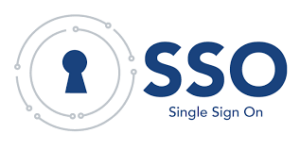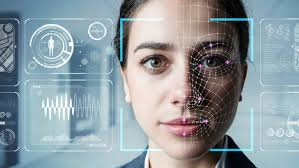In our increasingly interconnected world, where digital devices and applications are woven into the fabric of our daily routines, the significance of data security looms more significant than ever. Over recent years, cybercriminals have unleashed a wave of sophisticated malware and ransomware attacks that have posed significant threats to businesses globally, compromising internal data and disrupting essential operations.
While many consumers might feel insulated from such threats, believing they primarily target large corporations and manufacturing entities, the reality is starkly different. Hackers have consistently demonstrated their relentless pursuit of personal information and transaction details belonging to individuals, proving that no one is truly safe from their reach.
In response to this alarming trend, organizations across the globe are placing an elevated emphasis on safeguarding customer data. Financial institutions, particularly banks, are at the forefront of this movement, recognizing the critical importance of robust data security measures. This heightened focus has catalyzed the development and implementation of five innovative authentication technologies designed to verify user identities, facilitating secure digital transactions—including those conducted at ATMs. These advancements promise to significantly enhance the security landscape of digital banking, allowing customers to engage in online banking with newfound ease, confidence, and safety.

One of the most recognizable forms of authentication—fingerprint scanning—gained widespread acceptance following the introduction of Apple’s Touch ID with the iPhone 5s in 2013. In its wake, competitors quickly unveiled their fingerprint recognition systems. Today, however, we stand on the cusp of a new era in authentication as five additional methods are being conceived and rolled out precisely for the realm of digital banking. This evolution heralds a future where securing personal financial transactions becomes not just a necessity but a seamless part of the user experience.
In a significant leap towards enhanced security in banking, TSB Bank, a prominent financial institution in the United Kingdom, has boldly proclaimed its status as the pioneering provider of iris scanning authentication among European financial services. This innovative approach allows customers to seamlessly log into their mobile banking application by simply scanning an image of their eye. This process redefines convenience and security in personal finance management.

The technology behind the iris scanner is quite fascinating, as it employs both the camera and the infrared LED present in compatible smartphones. When a user initiates the login process, the camera captures the intricate patterns of infrared light reflecting off the iris. However, it’s worth noting that this advanced functionality is limited to specific high-end devices, such as the Samsung Galaxy S8 and S8+, which are equipped to support this feature. With just a glance at the smartphone screen, users can effortlessly access their banking app, making the entire experience feel almost magical.

What sets iris scanning apart from other biometric verification methods is its exceptional security. The unique patterns found in a human iris—numbering an impressive 266 distinct features—far surpass those of fingerprints, which contain only about 40 unique characteristics. This remarkable level of complexity makes iris scanning a formidable tool for confirming one’s identity. Yet, despite its advantages, the technology has not been without controversy. A self-proclaimed hacker has claimed to have found a way to outsmart iris recognition systems by printing a photograph of an iris under night mode conditions, covering it with a contact lens, and then presenting this concoction for scanning. Such claims have raised eyebrows and prompted ongoing scrutiny of this biometric method.

In this era of paramount security, the advent of iris scanning represents a promising yet still evolving frontier in safeguarding personal information. As TSB Bank leads the charge into this uncharted territory, it remains to be seen how these advancements will shape the future of banking security and whether they will withstand the challenges posed by those who seek to exploit vulnerabilities in this cutting-edge technology.
2. Voice Recognition Security System
In the realm of modern security measures, voice biometric authentication has emerged as a method that determines an individual’s identity through the distinct characteristics inherent in their vocal patterns. This innovative approach has been adopted by various banks across the United Kingdom, including Barclays, which have rolled out trial programs allowing customers to access services via voice authentication.

Upon a customer’s verbal request for assistance, the system swiftly analyzes the nuances of their voice, matching them with the corresponding account information. This seamless process eliminates the need for a customer service representative to verify personal details before addressing a customer’s inquiry.
However, this promising technology is not without its flaws. A notable incident occurred in 2017 when HSBC implemented voice identification for its clients in the UK. A BBC journalist managed to deceive the system by impersonating his non-identical twin brother—a legitimate customer of the bank—thereby gaining unauthorized access to his account. This incident raised significant concerns regarding the reliability and security of voice recognition systems.
Security expert Professor Alan Woodward from the University of Surrey expressed his reservations about relying solely on a single biometric method for safeguarding sensitive information. He pointed out that such patterns can indeed be compromised. Citing previous instances where fingerprints were replicated from the residue left on candy or through photographs, he emphasized the importance of incorporating an additional security layer. Woodward advocates for combining voice recognition with other forms of verification, such as a PIN code inputted by the user, to bolster overall security.
The Evolution of Palm Vein Pattern Authentication
In an age where security breaches are all too common, the quest for safer authentication methods has led researchers to explore innovative alternatives to traditional fingerprint scanning. Recognizing the vulnerabilities associated with fingerprints, they turned their attention to a more intricate and secure method: scanning the unique vascular patterns within a user’s palm. This approach not only enhances safety but also provides remarkable accuracy, allowing users to authenticate themselves without the need for direct contact with the device.
Among the pioneers of this groundbreaking technology is Fujitsu, a prominent Japanese computer company that has been at the forefront of palm vein authentication since 2004. In that year, several major banks across Japan began to adopt this advanced system, marking a significant shift in how customers engage with their banking services. By utilizing palm vein recognition, these financial institutions enabled customers to conduct transactions seamlessly, eliminating the need for ATM cards or traditional passbooks. This innovation proved invaluable not only for customer convenience but also as a robust internal measure to combat fraud within the bank’s operations.

A study assessing the accuracy of this system revealed an astonishingly low error rate of just 0.00008%. Such precision highlights the reliability of palm vein recognition as a secure form of authentication. One notable success story comes from Brazil’s Banco Bradesco, which integrated Fujitsu’s technology alongside ATM cards and user codes. This combination allowed the bank to authenticate an impressive 700 million transactions without experiencing a single instance of fraud. In stark contrast, methods reliant on account codes, PINs, or identification numbers were plagued by errors and fraudulent activities.
What sets palm vein authentication apart is its foundation in the unique vascular patterns found in each individual’s hand. These intricate designs serve as a distinctive physical identifier that is extremely difficult to replicate or alter. This inherent uniqueness adds an extra layer of security, ensuring that unauthorized access remains virtually impossible. Additionally, this non-contact technology has proven beneficial in reducing the transmission of illnesses, such as influenza, by eliminating the need for physical interaction during the authentication process.
Thus, as we delve deeper into the realm of authentication technologies, it becomes evident that palm vein pattern recognition stands out not only for its security and accuracy but also for its ability to adapt to contemporary health considerations. This innovative approach is reshaping our understanding of secure transactions and personal identification in an increasingly digital world.
4. Geolocation
In the realm of modern technology, one innovative solution that stands apart from biometrics is geolocation. This fascinating approach pinpoints an individual’s online location in real-time, offering a level of accuracy in authentication that many claim surpasses traditional biometric methods. Among the pioneers in this field is Pulse ID, a startup based in Hong Kong that is actively working on developing systems that leverage this cutting-edge technology.

5. Facial Recognition
The journey into facial recognition technology gained significant momentum with Apple’s introduction of the iPhone X in 2017. Apple proudly announced that its facial recognition feature boasted an astonishingly low error rate of just 1 in 1,000,000—a stark contrast to the 1 in 50,000 error rate associated with fingerprint recognition.
This advancement has not gone unnoticed, as several other companies are now embracing facial recognition in their operationa in major banks—Lloyds, Halifax, and Bank of Scotland—have joined forces with Microsoft to implement a system designed to authenticate customers accessing their online banking platforms through computers running Windows 10.
their operationa in major banks—Lloyds, Halifax, and Bank of Scotland—have joined forces with Microsoft to implement a system designed to authenticate customers accessing their online banking platforms through computers running Windows 10.
As Apple’s and other early adopters’ influence continues to grow, various smartphone manufacturers are anticipated to soon unveil their own versions of facial recognition technology. This shift is poised to have significant implications for financial service providers and mobile transaction platforms alike. Just a few years back, such technology might have seemed like something out of a science fiction novel; however, it is rapidly integrating into the fabric of our everyday lives, transforming the way we interact with the digital world around us.
Maxthon
Maxthon stands on the verge of transforming the landscape of cloud gaming with its groundbreaking browser, meticulously crafted for the gaming community. At its essence, Maxthon is powered by a complex array of algorithms that significantly boost both speed and overall performance, creating an environment where gaming can reach new heights. These cutting-edge technologies work harmoniously to produce stunning graphics while effectively eliminating any lag that could interfere with the gaming experience. For those gamers in search of a profoundly engaging adventure, this flawless integration is not just a bonus; it is a vital part of what makes gaming exhilarating.
Yet, Maxthon offers far more than striking visuals. The browser incorporates advanced data management strategies that greatly reduce loading times as players transition between levels or different game modes. This means that gamers can plunge straight into the action without being subjected to frustrating delays, allowing them to savour every electrifying moment of their gaming journey.
In addition to its impressive speed and visual fidelity, Maxthon strongly emphasizes reliable connectivity. Gamers can count on a consistent connection with minimal disruptions, whether they are enjoying solo play or teaming up with friends for online battles. This dedication to ensuring stable connections significantly elevates the overall gaming experience, allowing players to immerse themselves fully in their virtual worlds.
One of the remarkable aspects of Maxthon is its seamless functionality across a multitude of devices. Whether you’re utilizing a smartphone, tablet, or desktop computer, accessing your favourite games has never been easier; you’re no longer confined to a single console. This flexibility introduces an unprecedented level of convenience to your gaming routine. Picture settling into your favourite chair after a demanding day and effortlessly picking up right where you left off with just a few taps on your device—this scenario perfectly illustrates the brilliance behind cross-device compatibility.
Moreover, Maxthon’s user interface plays a pivotal role in enhancing the entire experience. Its design focuses on simplicity and ease of use, ensuring that gamers can navigate effortlessly through their options and settings. In a world where every second counts, especially in gaming, having an intuitive interface allows players to focus more on enjoying their adventures rather than getting lost in complicated menus.
As Maxthon continues to evolve and push the boundaries of what’s possible in cloud gaming, it promises to deliver not just a browser but an entire ecosystem dedicated to creating unforgettable gaming experiences. With each new feature and improvement, it invites players to explore vast worlds, connect with friends, and embark on thrilling quests—all at lightning speed and with impeccable reliability. As we look towards the future of gaming, Maxthon stands poised to lead the charge into uncharted territories, making every moment spent gaming nothing short of extraordinary.

